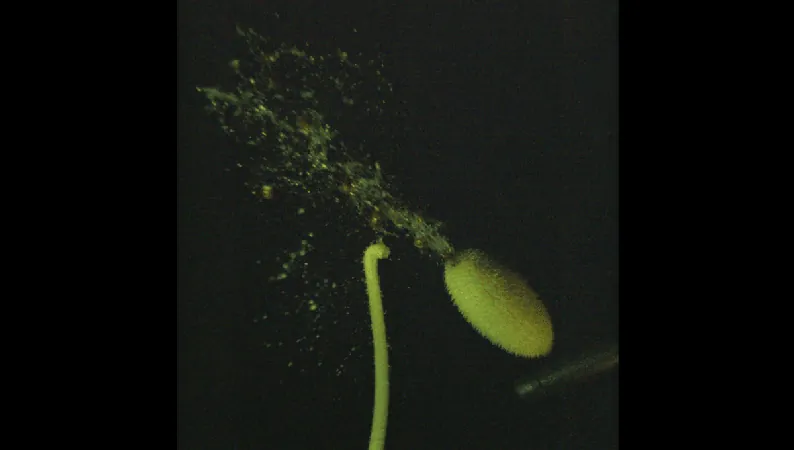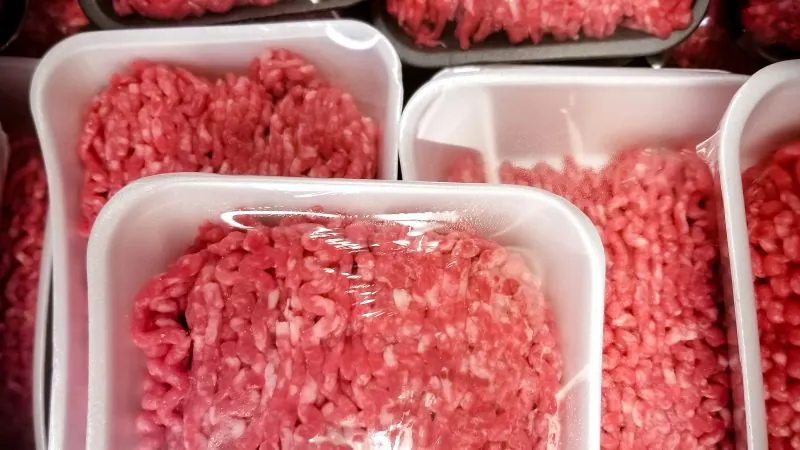
Shocking Discovery: How the Squirting Cucumber Launches Seeds Up to 10 Meters!
2024-11-26
Author: Chun
Shocking Discovery: How the Squirting Cucumber Launches Seeds Up to 10 Meters!
In a surprising turn of botanical research, scientists at the University of Manchester and the University of Oxford have unveiled the astonishing mechanics behind the squirting cucumber, a plant that has developed a unique method for seed dispersal that’s both effective and eye-catching. As curious as its name suggests, the squirting cucumber, scientifically known as Ecballium elaterium, has a system for launching its seeds that could leave anyone amazed—or even blushing.
This fascinating plant has evolved to tackle the challenge of seed distribution without relying on wind, a necessity for many other species. Instead, when it’s time for new cucumbers to sprout, the squirting cucumber utilizes a powerful, pressurized jet to expel its seeds, shooting them as far as 10 meters (approximately 32.8 feet) from the parent plant. While this distance is impressive, some other plants, such as the Chinese witch hazel, can achieve even greater ranges.
Interestingly, this explosive method of dispersal serves a dual purpose: it prevents the seeds from becoming dependent on the parent plant well into their growth and minimizes overcrowding, reducing competition among the offspring. This adaptation not only ensures the survival of the young plants but also piques the curiosity of scientists eager to understand how such an unusual mechanism functions.
To delve into this mystery, researchers employed advanced technology, including a high-speed camera capable of capturing up to 8,600 frames per second. By taking measurements of the squirting cucumber before and after seed ejection, as well as conducting time-lapse studies and CT scans, the scientists identified a four-stage process integral to the plant’s seed-launching mechanism.
Four Stages of Seed Launching Mechanism
1. Engorgement Stage: In the weeks leading up to seed dispersal, the fruit fills with a viscous “mucilaginous” fluid, preparing for the explosive event.
2. Pre-Launch Preparation: Days before dispersal, fluid moves into the stem, making it "longer, thicker, and stiffer," a necessary adjustment that alters the plant's angle from nearly vertical to about 45 degrees—the perfect launch position.
3. Recoil and Rotation: On the day of seed release, the tip of the stem rapidly recoils away from the fruit, creating a spinning motion as the fruit rotates in an opposite direction. Surprisingly, this mechanism appears to be unique in the plant kingdom.
4. Seed Ejection: Finally, the seeds are propelled outward, with the first seeds achieving the greatest distances. Upon completion of the event, seeds are distributed across a circular area, landing anywhere between 2 to 10 meters away from the original plant.
The squirting cucumber has captured attention for centuries; even the Roman naturalist Pliny the Elder noted its intriguing properties, warning that unripe cucumbers can eject seeds with sufficient force to pose a risk to the eyes.
From its historical notoriety to its contemporary classification as a weed, the squirting cucumber continues to demonstrate a remarkably effective means of ensuring the next generation’s survival. Its quirky adaptations not only showcase the wonders of nature but also leave us astounded at the strategies plants have developed to thrive in their environments. Who knew a mere cucumber could lead to such explosive revelations in the world of botany?





 Brasil (PT)
Brasil (PT)
 Canada (EN)
Canada (EN)
 Chile (ES)
Chile (ES)
 España (ES)
España (ES)
 France (FR)
France (FR)
 Hong Kong (EN)
Hong Kong (EN)
 Italia (IT)
Italia (IT)
 日本 (JA)
日本 (JA)
 Magyarország (HU)
Magyarország (HU)
 Norge (NO)
Norge (NO)
 Polska (PL)
Polska (PL)
 Schweiz (DE)
Schweiz (DE)
 Singapore (EN)
Singapore (EN)
 Sverige (SV)
Sverige (SV)
 Suomi (FI)
Suomi (FI)
 Türkiye (TR)
Türkiye (TR)